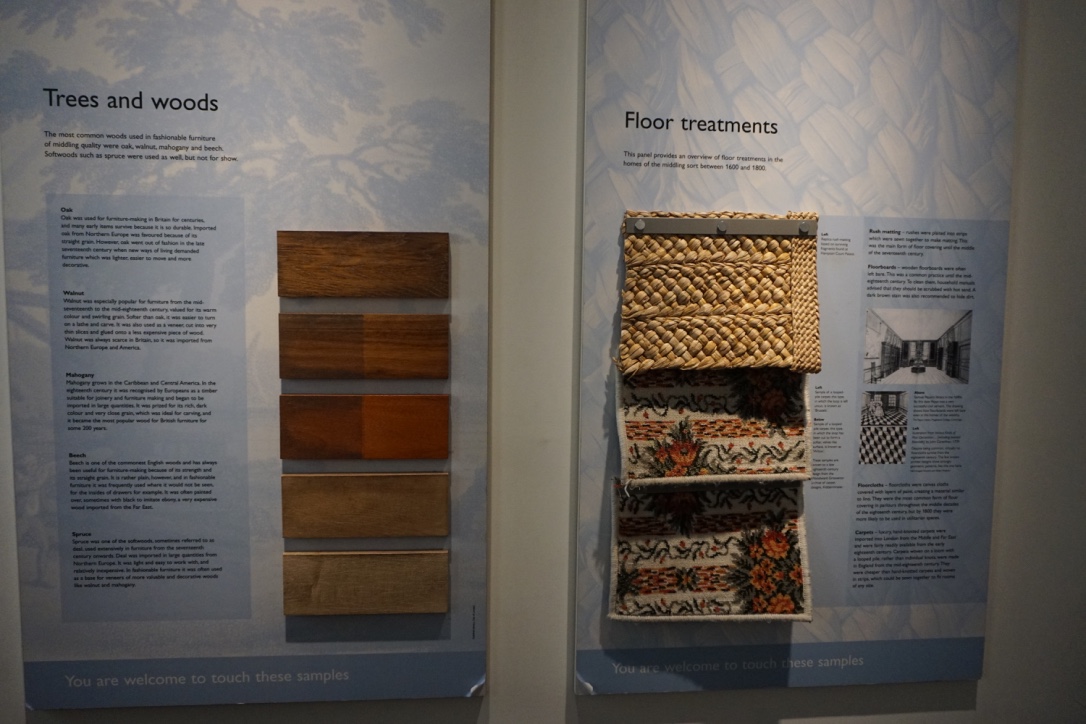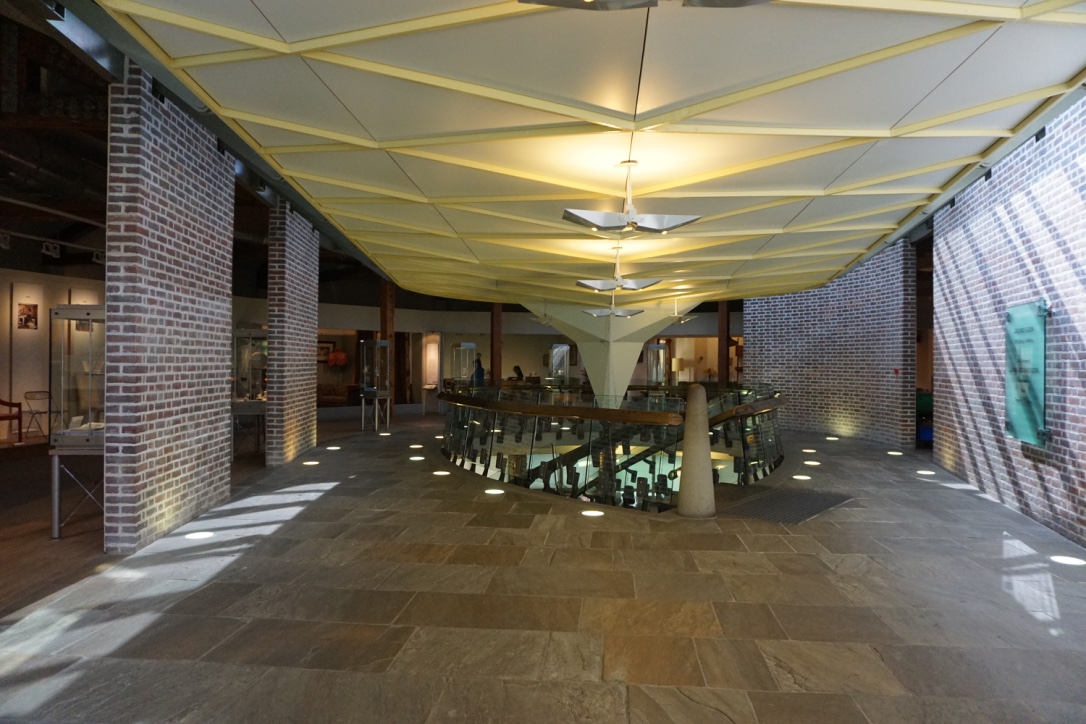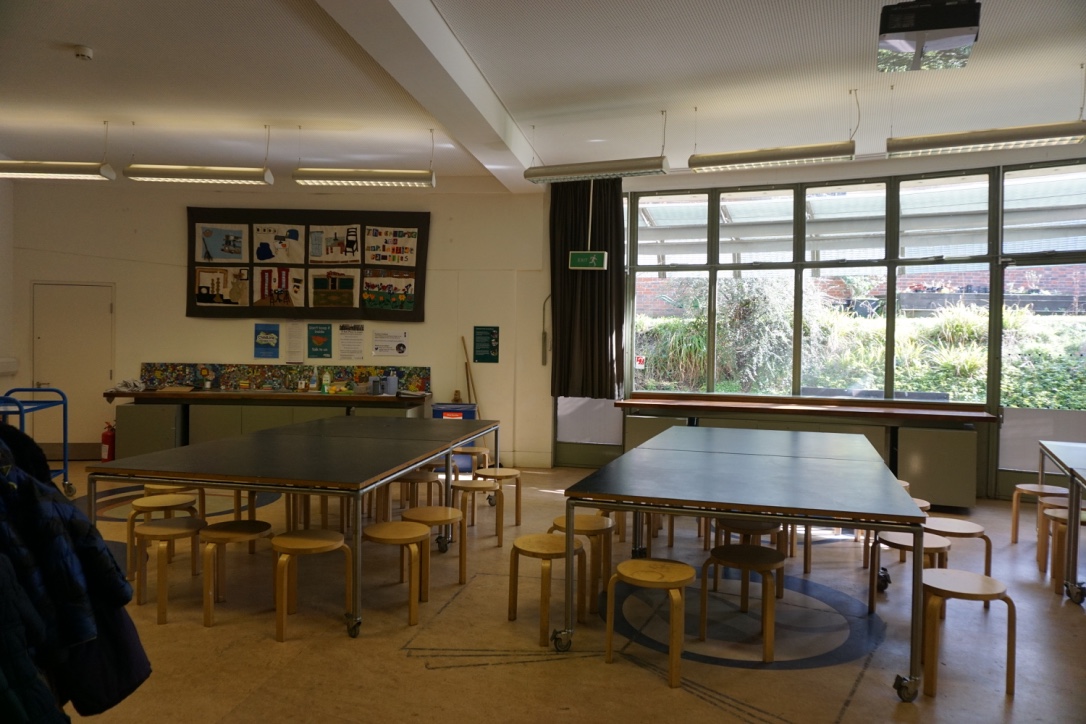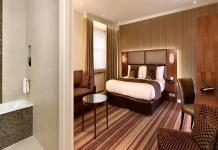Last updated: 01/10/2019
The Geffrye Museum is a different option for a tour in the Shoreditch region, east of London. I heard that he was the “House Museum” for showing the evolution in furniture English over the centuries. But the Geffrye Museum is more than that. It shows how English homes have changed over the centuries, as social and economic relations have also changed. And all this historical background changed my way of seeing the museum and it became even more interesting than at first sight. Check out what you can find in this little-known but history-packed museum.
THE GEFFRYE MUSEUM
Sir Robert Geffrye, a merchant and former mayor of London, began building an asylum for the elderly and the poor in 1714 through the company he was director, Ironmongers' Company. For nearly 200 years, the site provided a home for around 50 people at a time. At the beginning of the 20th century, the Hoxton area, where the asylum was established, became one of the most crowded and unpleasant parts of London. For this reason, Ironmongers' Company sold the property to begin moving the sheltered to a healthier region.

The site was then purchased by the County of London with the aim of providing an open public space for residents in the region. However, there was a request that the asylum's former rooms not be demolished, but converted into a museum. The Geffrye Museum opened in 1914 and aims to explore English homes from the 1600s to the present day. The museum has undergone a series of renovations and expansions and currently seeks to showcase displays evocative of London, middle class salons and gardens that illustrate homes and domestic life through the centuries, reflecting changes in society, behavior, style and taste.

WHAT IS THE VISIT TO THE GEFFRYE MUSEUM LIKE
Arriving at the museum, you will come across a very beautiful grassy area, with wooden benches all around. There are 3 places to visit at the Geffrye Museum: the 11 historic rooms, which are the culmination of the visit; the gardens that are open between the months of April and October; and a guided tour of an old asylum room that has been recreated as it was from around 1780 to 1880. Looking at the house from the front, the gardens are on the left. The entrance to the museum is on the same side as the gardens, but a little further forward. Entering the reception, just turn right to start the tour.

The beginning of the exhibition tells the entire history of the asylum (the same one we told in the previous item) and it is explained what the museum's main objective is: to display a series of period rooms that represent the homes of the British middle class.

ECONOMY IN LONDON: ACTIVITY CARDS
For those who want to do many things and visit many paid places in London, the suggestion is to purchase one of the cards that give you direct access to attractions and ride the tourist bus, saving a lot! O THE LONDON PASS is the most famous of them. The card can be purchased in versions of 1, 2, 3, 4, 5, 6 or 10 days. It entitles you to admission to over 60 of London's top attractions and 1 day tour on the hop-on hop-off sightseeing bus. In addition, the card offers more than 20 exclusive special offers at some of the city's shops and restaurants. See the full list of included attractions in this link. Price: from £69.
Read more: What to do in London – Complete itinerary of 5 days or more
1. 11 HISTORIC ROOMS
The 11 historic rooms that show the evolution of English homes between 1600 and the present day are the highlight of the visit. The museum shows how items of decoration, furniture, tapestry have evolved over the centuries. Everything is explained in order to place the visitor in the historical and social context of the time, showing that the middle class owned small businesses, which were managed in their own homes. The apprentices of these businesses used to live with their families. However, work relationships have changed over the centuries, as have social habits.


The social life of the English included literature, art, music and the habits of hosting dinners and attending social events at the homes of friends in society. Even the meals have been modified. In the past, breakfast was the main meal of the family and, for dinner, only something light was eaten in the late afternoon. These are some of the factors that caused the internal environments of the houses to be modified over time. The visit follows this order:
- ROOM 1: Hall in 1630 – The hall was the center of community activities in the house. It was often positioned on the first floor, above the family business premises. It was a busy space used for dining, recreation, entertainment and business.

- ROOM 2: Room in 1695 – This room represents a living room on the first floor of a house. The three windows overlook the street. Dining rooms were more private spaces where the family would gather, welcome guests and eat their meals. This way of life meant that there was a greater separation between the family and its employees.

- ROOM 3: Room in 1745 – The architectural form of the room and its position within the house had changed little since the late 17th century, although its furniture was very different. It was still the main room in which the family gathered, received guests and had some of their meals, even when there was a separate dining room in the house. People were expected to behave in a certain way, a social code known at the time as “politeness”.

There are some spaces between room 3 and 4 that are part of the old asylum such as a chapel, a room overlooking the garden and a beautiful lounge with pictures and books.
- Chapel of the old asylum

- Garden view area with decorated walls and chairs

- Room with books and paintings depicting families in the 17th and 18th centuries

- ROOM 4: Room in 1790 – This would be the room where the family would gather, receive guests and have meals. However, the way it was decorated and furnished had changed considerably from the previous period. Wallpapered walls replaced heavily molded panels.

- ROOM 5: Room in 1830 – This room represents a hall on the first floor overlooking the street. It has tall windows that extend to the floor, with elaborate drapes and ornamental balconies. It was a space where female family members could spend their free time reading, painting or playing music.

- ROOM 6: Room in 1870 – Unlike in the previous century, when the workplace and home were often in the same building, the pattern in the 20th century was for houses to be built further from the city center and for people to travel to work by bus, train or subway. The room on display represents a ground-floor living room in front of a house in one of London's sprawling suburbs. It would be used especially by the lady of the house, who would receive visitors.

- ROOM 7: Room in 1890 – From the 1870s onwards, there was a reaction against the dominant taste, which became known as the Aesthetic Movement. People who adopted this style cultivated an “artistic” taste and a marked sensitivity to beauty in art and design.

After Room 7, a Café and Gift Shop are located. The following exhibits, which depict the 20th and 21st centuries, are located in an adjacent modern building that opened in 1998.

- ROOM 8: Room in 1910 – Example of a semi-detached house in one of the new North London suburbs. These cottage-style homes included a “hall-room”, oak fireplaces, simple moldings and low ceilings. Electricity was also a new feature in these homes.

- ROOM 9: Room in 1935 – An example of an apartment, property that provided a convenient urban alternative to the suburban home, particularly for singles or childless couples.

- ROOM 10: Room in 1965 – A typical London townhouse that shows the incorporation of the dining room and living room in the same environment. The television becomes the focus of the room.

- ROOM 11: Loft-style apartment in 1998 – Shows how the conversion of commercial buildings into domestic spaces during the 1970s led to the creation of living spaces in former warehouses in London. The living room, kitchen and dining room are all together in the same space.

- LOWER FLOOR: Temporary Exhibitions and Event Rooms (the floor is accessed by elevator or a modern spiral staircase). Downstairs are also the bathrooms.


2. GARDENS
You can visit the herb garden and period gardens that show how home gardens have changed over the last four centuries. To recreate these spaces, evidence was gathered from drawings, prints, maps, garden plans, plantings, diaries and literature to obtain historical accuracy of the plants, planting relationships and the layout of the gardens. Remembering that the gardens open between the months of April and October and are closed during the winter.


3. TOUR: RESTORED ASYLUM ROOM
One of the old rooms of the asylum has been restored and is open to visitors through guided tours on specific dates and times. The room has been restored to its original condition, offering a perspective on the lives of the poor and elderly in London between the 1780s and 1880s. The site seeks to illustrate the history of the asylum and the people who lived there. I didn't get to do this tour because it wasn't available on the day I visited the museum.

COFFEE & GIFT SHOP
In addition to the museum itself, the complex has a large Café/Restaurant, with a glass ceiling and views of the gardens. The menu includes hot English dishes, salads, sandwiches, cakes, desserts, hot drinks, wines and beers.

Opposite is a Gift Shop with a wide variety of books focusing on design and decoration, as well as decorative gifts, tableware and gardening-related items.

HOW TO GET
- Subway:
- Get off at Old Street station on Northern Line (black) and walk for 15 minutes or take bus 243 to complete the journey
- Get off at Liverpool Street station on Hammersmith & City Line (pink), Metropolitan Line (purple) or circle line (yellow) and walk for 20 minutes or take bus 149 or 242 to reach the museum
- Overground: Hoxton station is just behind the museum
- Bus: Lines 67, 149, 242, 243 and 394
BOOK NOW your hotel and save up to 50%. Travelers readers are with a SUPER DISCOUNT! And the best, with FREE CANCELLATION*!
Booking.com
*check the hotels with free cancellation on the website
IMPORTANT INFORMATION
Geffrye Museum
- Address: 136 Kingsland Rd, London E2 8EA
- Schedules: Tuesday to Sunday 10am to 5pm / closed on Mondays / gardens closed during winter (November to March)
- Entrance: free / audio guide £3.50 / prices vary by special events
- Tours in the Reformed Rooms of the Asylum:
- Schedule: tours available on selected Tuesdays, Wednesdays and Saturdays throughout the year (see schedule here)
- Price: £4 per person
Save these tips to Pinterest!

See more different museums in London:
- london tennis museum and wimbledon court tour
- Bank of England Museum in London
- London: British Cavalry Museum and Changing of the Guard
- London: Charles Dickens Museum, author of “A Christmas Carol”
- Exploring London's new Design Museum
- Sherlock Holmes Museum in London
- Wallace Collection: one of London's best museums
- Handel & Hendrix Museum: Two Music Geniuses in London
- Freud Museum in London: the last home of the father of psychoanalysis
- Churchill War Rooms: WWII Bunkers in London







[…] London: The Evolution of English Homes at the Geffrye Museum […]
[…] London: The Evolution of English Homes at the Geffrye Museum […]
[…] London: The Evolution of English Homes at the Geffrye Museum […]